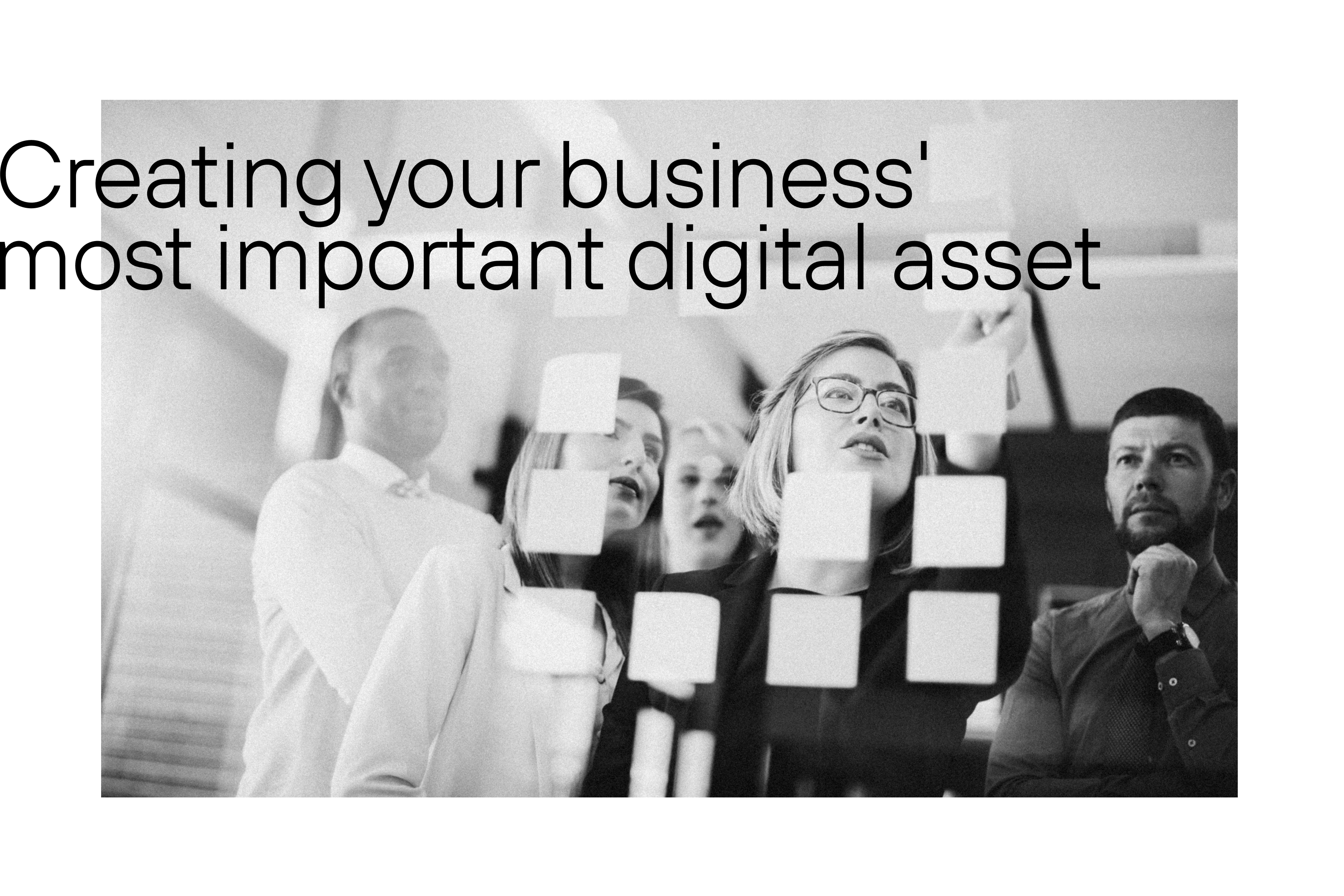
More than just publishing a few pages online, corporate website development is a strategic process for any company. After all, it is one of the most important digital assets of a business, a powerful virtual showcase that must reflect the brand’s identity and meet the expectations and needs of diverse users.
Additionally, a good website must perform well and be scalable, so it can grow with the business and support future marketing strategies. Therefore, its development involves not only programming but also thorough planning, user-centered design, and the creation of strategic content.
At Dexa, we are experts in web development, structuring digital projects based on a solid step-by-step model that ensures clarity, quality, and continuous evolution. To help you better understand the process, we’re sharing it in detail below, highlighting what truly matters for building a high-performance and long-lasting corporate website.
I want to develop my corporate website
Step 1: Discovery and Design
How to Diagnose and Build a Strategic User Experience
Discovery → Goals → Personas → UX/UI
Before writing a single line of code or working on the user interface (UI) design, it’s essential to understand the business context, its goals, and, most importantly, the users’ real needs.
“At Dexa, we combine the Discovery and Design phases to align strategy, experience, and execution. We focus on transforming information into UX decisions that add value and drive results. This is the first step in corporate website development with strategy at its core.”
During the Discovery phase, we use an investigative and collaborative approach: we conduct stakeholder interviews, map out personas and user journeys, analyze navigation flows, study competitors and industry benchmarks, evaluate existing content, and define the functional scope. We also identify SEO opportunities, required integrations, and technologies that will ensure the solution’s success.
With these insights, we move on to the UX/UI Design phase, where we create wireframes, interactive prototypes, and responsive layouts. Every design decision is guided by the user journey and the project's strategic goals. We aim for functionality, accessibility, and consistency with the brand identity, always focusing on a fluid, intuitive, and conversion-driven experience.”
- Roque Salles, Design Director at Dexa
High-impact digital projects begin with active listening, strategic analysis, and a user-centered design process. Without a proper diagnosis, there is no direction; without UX, there is no delivered value.
Recommended Reading: Digital Accessibility: Inclusive Experiences for Everyone

Step 2: Development
Back-end, Front-end, and Technical Quality
Back-end → Front-end → Testing → Security
With the Design phase approved, the Development phase begins, transforming the interface into a functional digital product. At this stage, it’s crucial to ensure code quality, performance, and security while creating a scalable foundation for future enhancements.
“We can compare website development to assembling a car. The design is the concept stage, it defines the engine, features, functions, and target audience.”
— Luiz Petri, Solutions Director at Dexa
The back-end is the engine of the site, where the logic, database, authentication, and integrations with external tools like CRMs, ERPs, and APIs live. Choosing the right CMS or framework, such as Drupal, WordPress, or Headless, depends on the project’s needs.
“In car manufacturing terms, the engine, chassis, wheels, everything that’s not visual, would be the back-end of a website. It’s built to fulfill the features defined during the design stage and makes the site run.”
The front-end is the visible part of the website that users interact with. Here, we use tools and software to structure and style the pages, ensuring the website is not only visually appealing but also responsive, accessible, fast, and true to the approved design. The structure is also built to support technical SEO and screen reader compatibility. This phase is handled with precision to ensure performance, stability, and interactivity, enhancing the user experience.
“Once the components that make the car run are in place, you could say it’s ‘ready,’ but without paint and finishing touches, no one would want to buy it. In the world of websites, this finishing stage is called front-end, just as important as the back-end, because ultimately, we want the site to ‘sell’ well.”
Finally, we enter the Testing and Approval phase, which includes responsive and cross-browser testing, form validation, integration checks, and accessibility evaluations. We create a staging environment to test and fine-tune before going live. This approval process is carried out in collaboration with the client to ensure all features meet expectations.
“At Dexa, we use Drupal, a secure, fast, and robust platform that allows us to create everything from hotsites to complex web systems (like compact cars to freight trucks). With this tool and our experience in design and development, we bring together ‘Japanese engines with Italian design’: the best of both worlds.”
I want to develop a Drupal website
Step 3: Launch and Continuous Evolution
A Website Is Never Truly ‘Done’
Launch → Monitoring → Ongoing Improvements
After publishing the website, many companies consider the work finished. At Dexa, this is where the most strategic phase begins: monitoring and continuous evolution. This step is crucial because a strong corporate website must adapt to user behavior, market shifts, and new communication and conversion opportunities.
In practice, corporate website development is a continuous process that becomes richer over time.
Using analytical tools, we monitor website performance in real time and evaluate key metrics such as time on site, bounce rate, channel traffic, CTA clicks, and top-performing keywords. This data enables us to make precise adjustments and continuous improvements.
We also ensure ongoing technical updates, enhancing performance, security, content optimization, and new features as needed. A well-built site must be modular, scalable, and easy to evolve, all of which are part of Dexa’s technical standard.
A good website matures, learns from data, and continuously evolves into a results-driven engine.
Step 4: Marketing Strategies
How to Make Your Website Visible and Relevant
SEO → Organic Content → Paid Media
The saying “out of sight, out of mind” couldn’t be more accurate here: it’s not enough to have a great website if it can’t be found. That’s why the fourth phase focuses on amplification and generating qualified traffic to increase visibility and conversions.
What’s effective at this stage:
- On-page and technical SEO: optimizing titles, meta descriptions, headers, and page load speed.
- Strategic content creation: optimized blog posts, service pages, and landing pages.
- Authority-building strategies: backlinks, media coverage, and sharing on relevant channels.
- Paid media campaigns: ads on Google, social media, and remarketing to boost exposure.
- CRM and automation tool integration, such as RD Station, HubSpot, or ActiveCampaign.
These strategies help position your site as the central hub of your digital presence, increasing both organic and paid traffic and generating real business opportunities.
A purposeful digital presence turns visits into real opportunities.
Governance and Security
An often-overlooked step in corporate website development is ensuring the structure is protected from vulnerabilities and ready to respond quickly to any incident. From this perspective, Dexa follows digital governance best practices, including access control, role-based permission management, continuous update protocols, and regular security audits.
We implement protective layers such as firewalls, automatic backups, encryption, and proactive traffic and suspicious activity monitoring. With this approach, we provide clients with a secure, stable, and standards-compliant digital environment.
Security best practices ensure your site is always stable, protected, and ready to scale.
Client Training
Onboarding → Guided Navigation → Hands-on Testing → Real Questions → Autonomy
At Dexa, completing a project also means preparing the client to operate the system independently through a personalized, comprehensive training process. This enables ongoing site maintenance and updates to be handled smoothly and efficiently.
During training, we walk clients through the admin panel, content publishing flows, and specific functionalities developed for the project. Every client is empowered to get the most value from the platform, confidently and securely.
Client empowerment is an essential part of the process.
A Well-Built Corporate Website Is an Investment in Technical Longevity
Strategic corporate website development requires a well-structured and well-executed process that includes research, design, technology, security, content, SEO, performance, and all business vision. When we talk about technical longevity, we’re referring to a platform’s ongoing ability to be updated and maintained, ensuring it adapts to market changes and continues to meet user needs over time.
That’s why every step outlined here must be handled by a skilled, multidisciplinary, and committed technical team.
At Dexa, we apply this process to projects for companies of all sizes and industries, always focused on delivering solid digital experiences that generate real results. We are dedicated to transforming ideas into robust platforms that evolve with your business.

